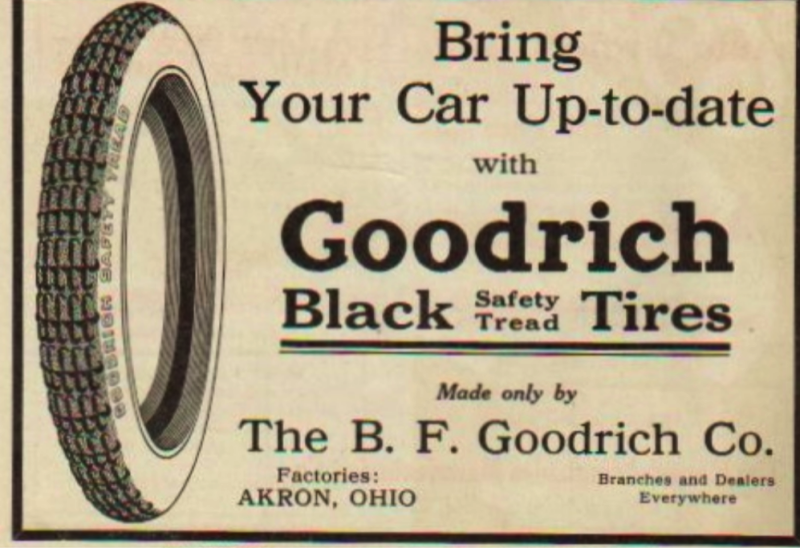Environmental pollution is increasing day by day. Fortunately, so do the people’s awareness. Therefore, using secondhand or reused items is a solution many people implement to solve the problem.
In particular, for drivers and cars owners, using used tires is considered a smart and optimal choice.
Using used ones not only contributes to reducing waste but also saves money with good and stable performance.
Therefore, this article will focus on answering the problems of used tyres, specifically whether 7 32 tread good or bad, several ways to check them, and resolutions for common questions. Now, let’s start it!
Is 7/32 Tire Tread Good Or Bad?Before answering this demanding question, we should briefly look at the 7/32 tyre definition.
What Does 7/32 Mean?OverviewTread depth is the distance between the top rubber and the deepest groove of the tires. During use, the depth is shortened because of worn out. As a result, it’s a method to identify the usability of tires.
A new tire usually has 10/32 or 11/32 of an inch of tread. In some higher products, they may have 12/32. Basically, the term 7/32 tires include two meanings. The first is that it’s a used tyre.
The other indicates the new level or status of the tires. In this case, tire tread depth 7 32 compared to 10/32, an original tread depth, is quite good and comparative.
The Percentage & Other SpecsWe would like to mention the depth in other specifications for easier understanding. We can take these specs as a reference to check the depth.
| Fraction(/32″) | Inch | Mm (millimeter) |
| 1/32″ | 0.031 | 0.79 |
| 2/32″ | 0.063 | 1.59 |
| 3/32″ | 0.094 | 2.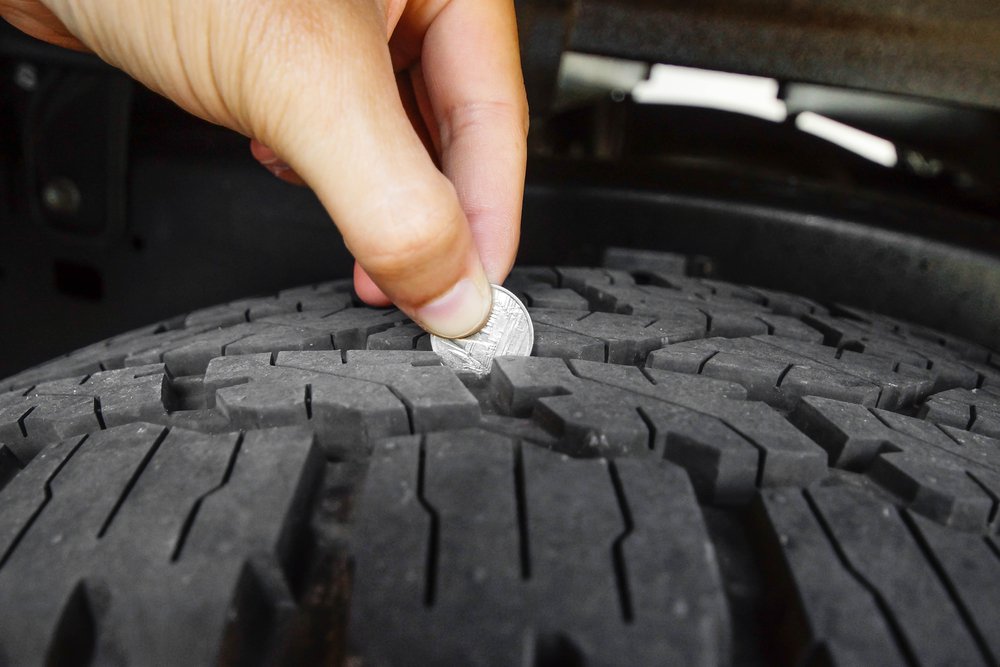 38 38 |
| 4/32″ | 0.125 | 3.18 |
| 5/32″ | 0.156 | 3.97 |
| 6/32″ | 0.188 | 4.76 |
| 7/32″ | 0.219 | 5.56 |
| 8/32″ | 0.250 | 6.35 |
| 9/32″ | 0.281 | 7.14 |
| 10/32″ | 0.313 | 7.94 |
| 11/32″ | 0.344 | 8.73 |
| 12/32″ | 0.375 | 9.53 |
Before judging whether the tire is good or bad, there are many aspects to consider before concluding. However, comparing the 7/32 (5.56 mm) used tire with the new 10/32 (7.94 mm), we see that it’s not far different.
When the rate comes to 2/32″, it’s time to change another one as this is the legal minimum of depth. So, is 7/32 good tire tread?
Yes! Compared to the new one, we can save lots of money. In other words, comparatively efficient performance and pretty high usability with an affordable price may help us answer the question 7/32 tread good or bad.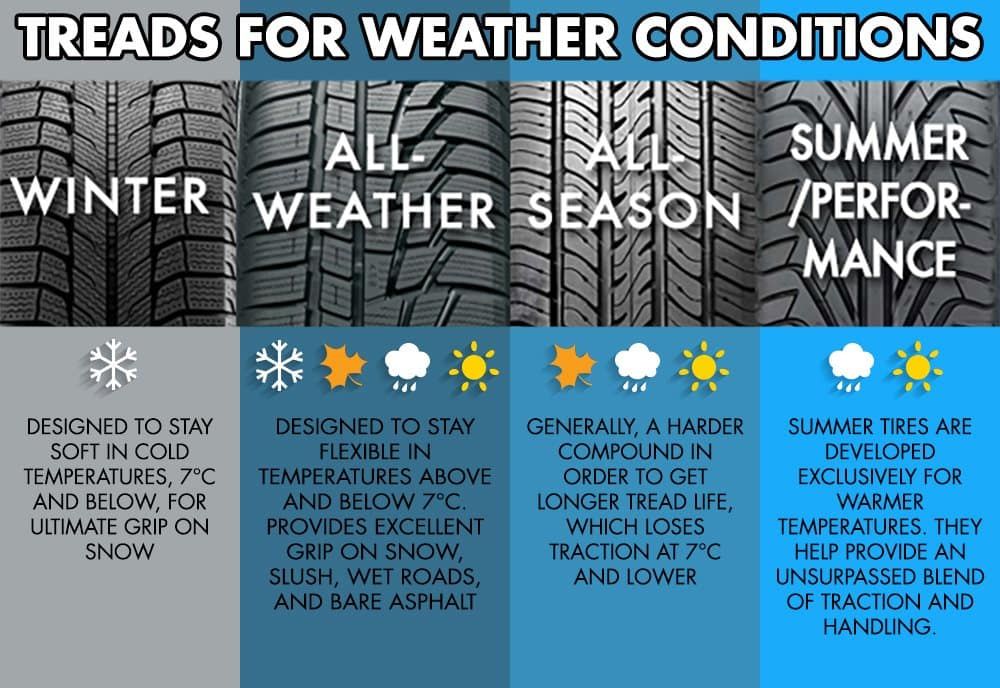
Like other types, we need to avoid sharp movements, sudden acceleration, and high speeds, especially when loaded heavily, to make the tyres durable and work longer.
In those cases, the wheels have to work harder, and the worn-out progress takes place faster.
Therefore, it’s necessary to get out of some bad habits while driving to extend the tread life of the 7/32.

Look at how much of Lincoln’s head is hidden in a groove if you put a coin in it sideways. If you can see everything, the tested tire is already worn out, maybe with a depth of 2/32″.
In the case of a small portion of his head still under the groove, we may have a 4/32″ left. If the tread of the tire covers the top of it, we have 6/32″ usable or more.
Treadwear Indicator BarsThese wear bars that tire manufacturers implemented (typically 6) are found in the grooves of most tires, indicating that the minimum allowable depth is 2/32″.
There are tire types with different bar grades, such as 6/32″, 4/32″, and 2/32″. When a bar appears, the tire has reached a specified depth.
Tread Depth GaugeThis test is quite easy and supported by a gauge.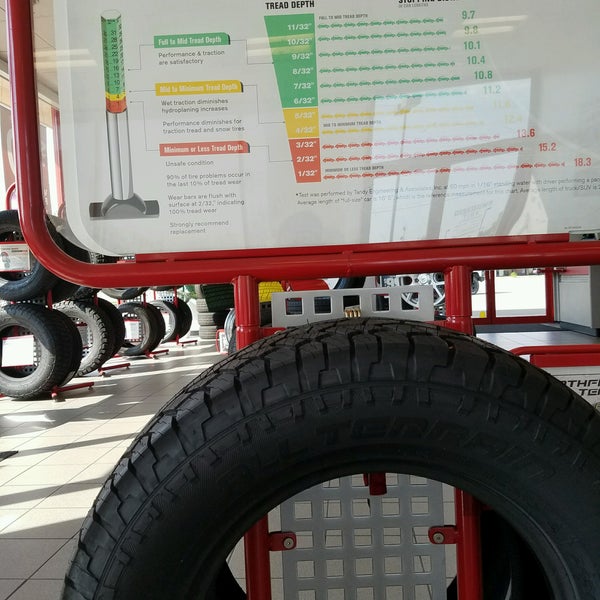 Place the pin of the gauge in a groove and press it against the tread. We will receive an exact reading of the depth of our used tires in both inches and millimeters.
Place the pin of the gauge in a groove and press it against the tread. We will receive an exact reading of the depth of our used tires in both inches and millimeters.
We may also use a ruler to determine the precise amount of tread left by using the 1/16″ scale. It’s the same as 2/32″ but easier to use for this sort of measurement.
NoticeWhen using any of these above methods, we need to measure tread depth not only on all tires but also in different grooves. There may be some uneven wear.
For example, one groove may have enough tire to keep us safe while another is bald.
FAQsCan I Use 7 32 Tire In Wet Conditions?Are 7/32 tires good enough for snow-covered roads? We do believe that!
In general, they are still quality and efficient. The tread depth can allow snow and water to pass through, keeping the grip while driving.
What Used Tires Tread Depth Gauge Mean?The following are the different levels of treadwear:

There are many signs indicating the tire is unqualified or bad. As we’re looking for a secondhand type of tire, some basic following signs may help us recognize and avoid a bad one.
 So, if we examine a used tire, don’t forget this detail.
So, if we examine a used tire, don’t forget this detail.In conclusion, we believe that using used tires is a wise and optimal choice. If we equip ourselves with knowledge and observations, we’ll find choosing a nice used tire uncomplicated.
Besides, some persuasive grounds are saving money, good dry and wet surface, reduced waste, etc.
Although the question “is 7 32 tread good or bad?” is commonly discussed so far, based on our experiences and references, 7/32 tires are quite good to try!
References

Tires are one of the more expensive items you can buy for your car. While you don’t replace them often, it’s important you have the right tires for your vehicle and budget. After all, those four patches of rubber are keeping your vehicle on the road.
However, not everyone can afford to buy new tires – especially as the cost of owning a vehicle continues to increase. Because new tires are expensive, you may have asked if used tires actually exist? And if so, is there a potential for savings?
Perhaps the bigger question is whether or not they are safe. Sure, you might save money, but you always need to consider safety when you buy tires. In this guide, we will examine the pros and cons of new versus used, and how pre-owned tires have their advantages if you are shopping on a budget.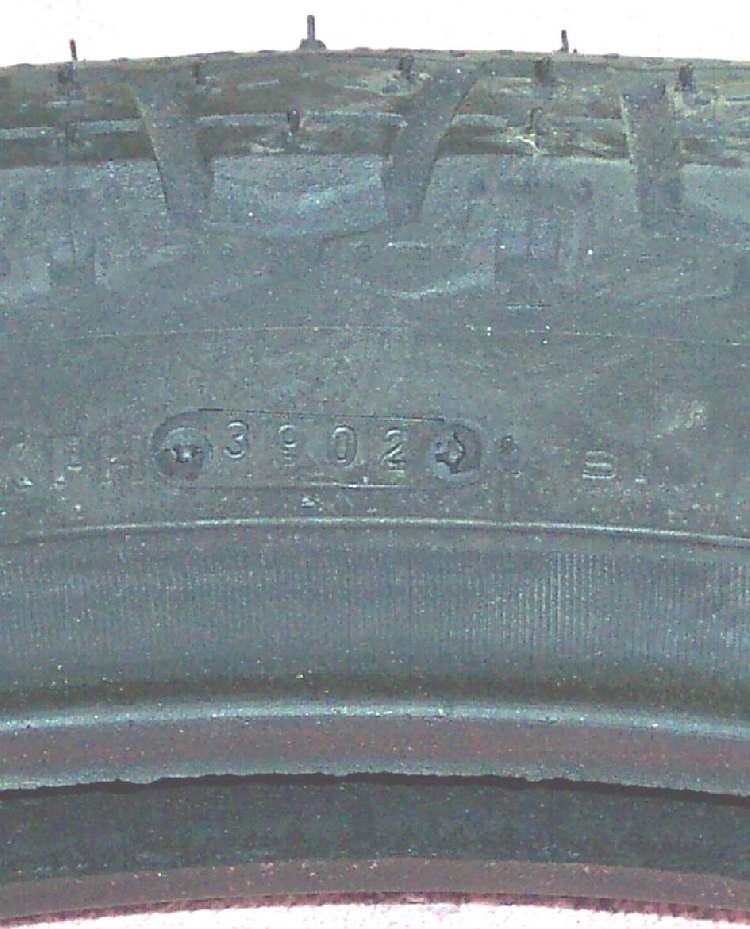 Finally, we provide some comparison pricing to show you the difference in cost.
Finally, we provide some comparison pricing to show you the difference in cost.
Since you’re buying a brand new product, the tires are covered by a plethora of warranties including tread life and quality of construction. In terms of handling, braking, steering feel, comfort, and road noise, new tires are like a box of chocolates. You never know what you will get until you actually drive on them, but doing research ahead of time will help.
If there’s one thing certain about new tires it’s the higher cost, especially if your vehicle has 19-inch or 20-inch wheels. If your vehicle needs a set of high-performance or ultra-high-performance (UHP) rubber, you will pay more since those are more specialized compared to normal passenger car tires.
This is where pre-owned tires come into play. Granted they don’t come with that type of warranty, but you can save hundreds of dollars while still getting the right tires for your vehicle. That money you can use for repairs, maintenance, or installation costs including balancing and/or alignment.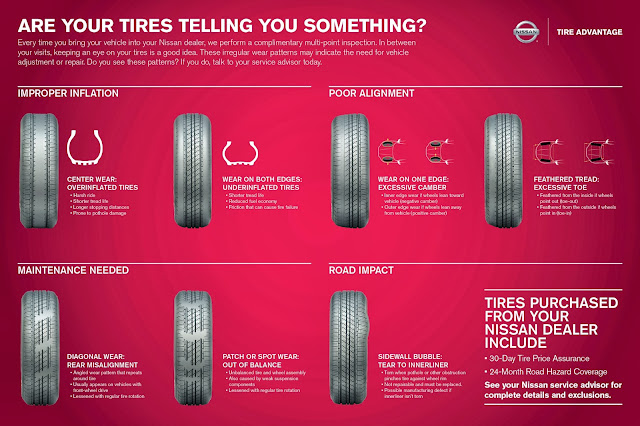
Used tires are also great for leased vehicles. If you think you’re going to exceed the allotted mileage of your lease, you can avoid additional penalties (like replacing the OEM rubber) with a set of pre-owned ones. When the lease expires, swap the used tires for the OEM rubber and you’re done.
Opting for a pair of high-quality used tires might save you money.Frankly, it depends. Not all tires are the same. Some may have more patches than most, but it doesn’t mean the tire is bad. The general rule is to check for two things: tread depth and damage. Of course, you don’t want to buy anything with a tread depth near the limit of 3/32” – and in reality 4/32” is cause for consideration.
Once your tread reaches those measurements, it’s time for a different set. Research from AAA suggests that driving on worn tires at highway speed or on wet surfaces can increase stopping distances by up to 90 feet. That’s more than the length of an eighteen-wheeler! That said, when shopping for used tires, always look for a safe tread depth. You should move on if you see visible signs of damage, deep cuts, irregular wear, bulges, or deformation.
You should move on if you see visible signs of damage, deep cuts, irregular wear, bulges, or deformation.
If you don’t have a tread depth gauge, there is an easy home remedy you can use to check your current tires. Place an upside-down quarter between the grooves and look at Washington’s head. If you can see all of it, it’s time for a different set. If you’re shopping on a budget and thinking a set of pre-owned tires might be for you, it’s best to focus your attention on where to buy them.
Doing a quick Google search will likely lead you to BestUsedTires.com. The site has a healthy selection of top brands like Firestone, Goodyear, Bridgestone, Continental, and BFGoodrich among others. They also have a 90-day money back guarantee, free delivery, and tens of thousands of positive reviews online.
While there are other places to buy used tires, the price match guarantee and good selection at BestUsedTires.com made it fairly easy for us to make some comparisons.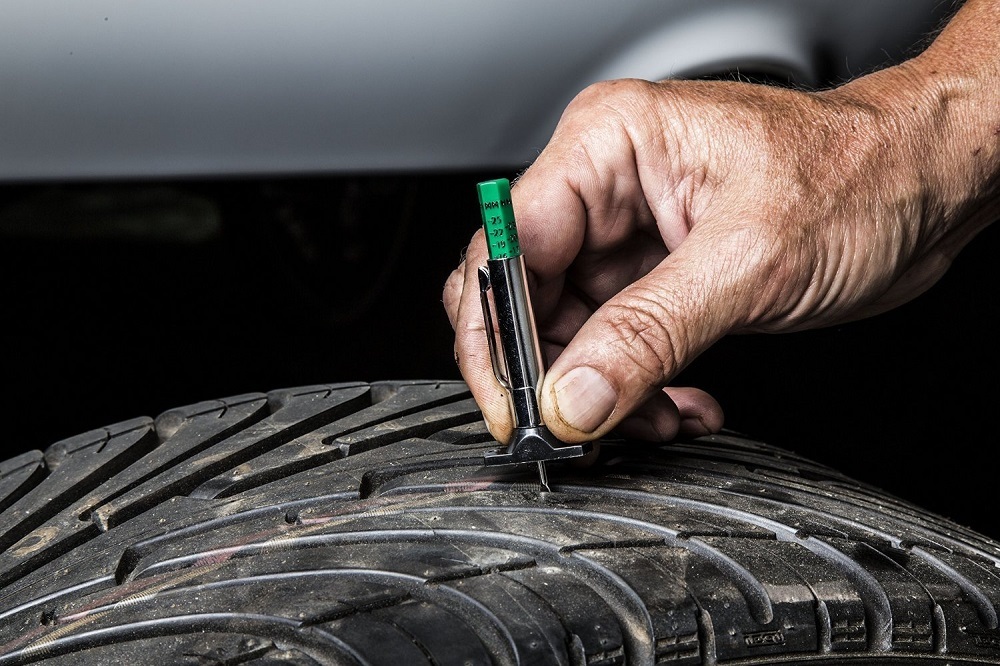 We also think the company’s inspection process (detailed below) is thorough and comprehensive. Regardless of where you purchase pre-owned tires, make sure to ask questions beforehand so you know you are getting a quality set.
We also think the company’s inspection process (detailed below) is thorough and comprehensive. Regardless of where you purchase pre-owned tires, make sure to ask questions beforehand so you know you are getting a quality set.
In order to ensure safety, each tire is inspected at least twice prior to listing, according to the company. In addition, all tires are given a special pressure test when they arrive. If there are prior damages or repairs made to the tire in question, they follow the Rubber Manufacturers Association guidelines:
If a tire fails any of those points, it’s discarded. When they say “the tread section of the tire,” what that means is no damage or holes in the sidewall. Patching sidewall holes are a gamble you won’t win, considering they are partly responsible for the strength, durability, and ride quality of a particular tire.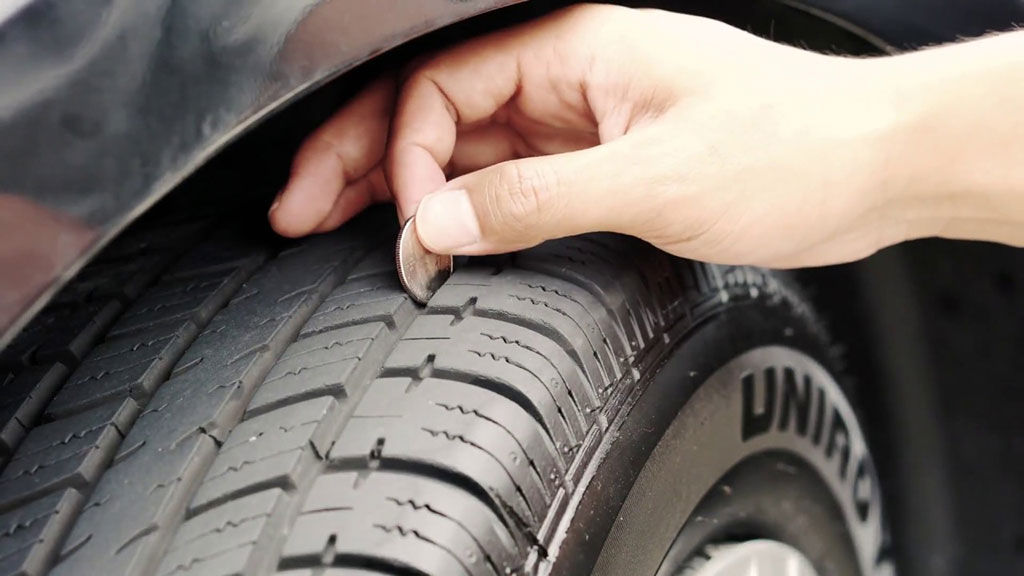 If a tire has a damaged sidewall, it needs to be replaced entirely. Most reputable shops will not repair something like a nail in a sidewall; they will insist on a total replacement (and they’re right.)
If a tire has a damaged sidewall, it needs to be replaced entirely. Most reputable shops will not repair something like a nail in a sidewall; they will insist on a total replacement (and they’re right.)
So, are used tires safe? Yes, but only if you buy from a reputable seller/dealer and if you find something with a higher percentage of tread life. Regardless of where you buy, always do your research ahead of time and ask questions.
Not all makes and brands offer excellent wear life. Some are better than others, while in some cases tread life is determined by the type of tire. For example, touring tires are expected to wear slower than performance rubber or summer tires. The same can be said for H/T or highway-terrain tires for pickup trucks or SUVs, which have longer wear characteristics than A/T or all-terrain tires.
In most cases, tread life is dependent on many factors including the general condition of the vehicle, driving behavior, the number of miles traveled, and existing road/weather conditions. So, to answer the question of how long a given set of tires will last, new or used: it depends on how you drive your vehicle and where. You might not have any control over the latter, but if you drive carefully and responsibly, you should be able to squeeze every last mile out of a set of used tires.
Related: Make your car last longer with this simple but essential guide.
Our experience says not to purchase anything unless there’s at least 7 to 9/32” of tread depth – and even higher it’s a more aggressive truck or SUV tire. Anything less than that is probably bad news for longevity, comfort, and traction. Check the listings carefully wherever you shop.
Most sellers will display the remaining tread depth outright, but you don’t have to take their word for it.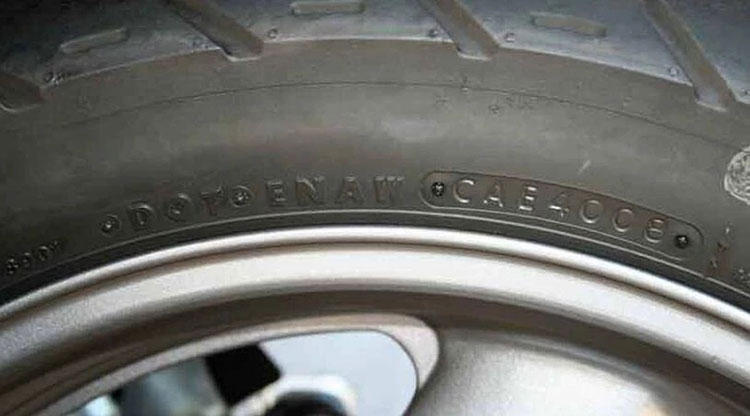 The listings should come with actual images of the product. If anything strikes you as odd (like bald spots or uneven wear marks), move on and check for other options.
The listings should come with actual images of the product. If anything strikes you as odd (like bald spots or uneven wear marks), move on and check for other options.
Again, the answer depends on the type of tire and vehicle. In order to come up with a concrete answer, let’s compare the actual price of new tires and used ones from the same make and brand. With BestUsedTires.com, the savings can be significant – up to 65 percent in some cases. All orders include a 90-day money back guarantee and free shipping via FedEx. Orders are usually shipped the same day they are placed.
Let’s start with the Bridgestone Turanza Serenity Plus. It’s a tire for passenger cars, small coupes, and compact hatchbacks/sedans. The Turanza Serenity Plus is an all-season touring tire promising comfort, a quiet ride, and longer tread life. The Turanza Serenity Plus starts at $184.00 for the 215/50/R17 size. If you do the math, that’s around $736. 00 for a set of four new tires.
00 for a set of four new tires.
BestUsedTires.com has a selection of used Bridgestone Turanza Serenity Plus tires in the same 215/50/R17 configuration. The company is selling a set of four for only $324.00, which equates to $81.00 each – much less expensive than a comparable set new. The used Bridgestones have an approximate tread depth of 9 to 10/32”, or 95 percent of their original depth. Doing the math once more, you save around $412.00 in this transaction, a significant amount for what is essentially the same tire.
| Bridgestone Turanza Serenity Plus | |
|---|---|
| New Price | Used Price |
| $736.00 | $324.00 |
| Savings: $412.00 (56%) | |
For our next example, let’s compare a new set of Falken Sincera SN250 A/S with a pre-owned alternative. Amazon lists the Sincera SN250 A/S at around $120. 00 each for the 225/45/R17 size. Mind you, Falken tires are known for having lower prices among popular brands.
00 each for the 225/45/R17 size. Mind you, Falken tires are known for having lower prices among popular brands.
However, a quick search at BestUsedTires.com reveals the same Falken Sincera AN250 A/S tires (and same 225/45/R17 configuration) for only $62.00 each. You save 50 percent off the original price, and you’re still getting something with 10-11/32” of tread depth.
| Falken Sincera SN250 A/S | |
|---|---|
| New Price | Used Price |
| $480.00 | $248.00 |
| Savings: $232.00 (48%) | |
Tires for pickup trucks and SUVs are numerous, but let’s compare a well-known brand. Goodyear’s Wrangler All-Terrain Adventure with Kevlar is a popular choice. Goodyear says the Wrangler A/T Adventure with Kevlar is their best tire in terms of versatility, both on- and off-road. Since it’s infused with Kevlar, it’s considerably tougher and more rugged than an average A/T tire.
No doubt it’s a great choice but new they cost about $180.00 each (255/65/R17). This doesn’t include the $14.00 installation fee per tire. In short, you’re looking at around $200.00 each for the Goodyear Wrangler A/T Adventure with Kevlar.
However, BestUsedTires.com is offering a set of two Goodyear Wrangler A/T Adventure with Kevlar for $205.75. It’s the same size at 255/65/R17 with an approximate tread depth of 11 to 12/32”, which is healthy. From this transaction (assuming you can get two more at the same price), you could save nearly half if you bought used instead of new.
| Goodyear Wrangler A/T Adventure with Kevlar | |
|---|---|
| New Price | Used Price |
| $800.00 | $411.50 |
| Savings: $388.50 (49%) | |
Michelin is one of the best tires on the market. One of their most popular choices for light trucks and SUVs is the Defender LTX M/S. It’s an all-season tire with the on-road refinement of touring rubber. Michelin offers it with a 60,000-mile limited warranty. But there’s a problem if you are on a budget: they start at $192.00 each for 265/60/R17 sizes. Michelin is a great tire for any type of vehicle, but it comes at a price.
It’s an all-season tire with the on-road refinement of touring rubber. Michelin offers it with a 60,000-mile limited warranty. But there’s a problem if you are on a budget: they start at $192.00 each for 265/60/R17 sizes. Michelin is a great tire for any type of vehicle, but it comes at a price.
However, we found the same Michelin Defender LTX M/S tires in the same 265/60/R17 configuration at BestUsedTires.com. They cost $293.00 for a set of two used, which is equivalent to $146.00 each. With a tread depth of 11-12/32” it’s a smashing deal compared to buying new.
| Michelin Defender LTX M/S | |
|---|---|
| New Price | Used Price |
| $768.00 | $586.00 |
| Savings: $184.00 (24%) | |
We found BestUsedTires.com to be a great choice for buying used tires online with their money-back guarantee, great reviews, free shipping, and customer service.
If you prefer to shop local though, just google “used tires near me” and you should find some places nearby that buy and sell used tires.
We’re not saying used rubber is always better than new, but there’s no denying the cost savings potential here. It’s hard to ignore the money you can save for what are essentially the same tires.
They are safe as long as they pass inspection and have enough tread left. And if you’re thinking about buying pre-owned tires for your vehicle, make sure to only buy from reliable dealers. This will ensure each tire is thoroughly inspected and certified for road worthiness.
And remember: with any automotive product or repair, it’s best to do your research ahead of time.
*Prices accurate at the time of this writing. Future pricing subject to change.
The tire tread is the outer part of the wheel that provides traction in all weather conditions. The protectors inevitably wear out during the operation of the car, the working height of the slope decreases. The residual tread depth should be periodically monitored and the set of tires should be renewed in time - this will reduce the risk of losing control of the car and save the car owner from fines from the traffic police.
The protectors inevitably wear out during the operation of the car, the working height of the slope decreases. The residual tread depth should be periodically monitored and the set of tires should be renewed in time - this will reduce the risk of losing control of the car and save the car owner from fines from the traffic police.
Tread wear rate depends on many factors:
Measuring the thickness of the tread layer will allow you to accurately determine the degree of tire wear and make a decision in time to replace them with new ones.
Different tires have different wear limits. Tread depth affects vehicle handling and road safety.
| According to Chapter 5 of the SDA, limiting norms for the height of the tread pattern have been established. For category M1 - passenger cars - as well as vehicles of categories N1, O1 and O2, the minimum allowable value is 1.6 mm. When using winter tires on snowy or icy surfaces - the limit is 4 mm. |
Let us explain what categories of vehicles we are talking about:
N1 - vehicles intended for the carriage of goods, having a technically permissible maximum mass of not more than 3.5 tons;
O1 - trailers, the technically permissible maximum mass of which is not more than 0.75 tons;
O2 - trailers, the technically permissible maximum weight of which is over 0.75 tons, but not more than 3.5 tons.
The traffic police officer has the right to measure the residual depth with a verified device. In case of a recorded violation, a fine is imposed on the car owner.
The new summer tire has an average tread depth of 7-8 mm. The service life of summer tires is usually 3-5 seasons with average mileage and moderate driving style.
| Residual height limitation by law is 1. |
Do not wait until the critical value is reached. Make sure you change tires in advance.
Winter tires are used in severe weather conditions: low temperatures, icy conditions, on snowy road surfaces. Worn elements make the tire ineffective on slippery winter roads. Accordingly, a more serious approach to the condition of the tire tread is needed.
Non-studded friction tire (velcro) with tread depth 8-9mm. A new studded model - from 9 to 11 mm, some firms produce a tread with a height of 12-18 mm.
| If the tread wear is up to 4-5 mm, the winter set of tires needs to be replaced. In addition, the loss of more than 50% of the metal spikes is also a reason to change the car's shoes. |
The average life of winter tires is 2-4 years.
Universal all-weather is used in a temperate climate both in winter and in summer, it is optimal at temperatures from +10 to -10˚C. This type of tire is not suitable for use in snowfall or severe frosts. SDA allows the use of all-season tires in the winter if there is a special marking:
| All-season tires last 3-4 years on average. In summer, at high temperatures, all-weather tires wear out much faster. It is recommended to buy new tires when the tread layer is abraded to a value of 2-2.5 mm. |
You can estimate the remaining tread layer in various ways:
On some tire models there are special volumetric indicators in the form of jumpers. Check: if the tread layer is worn down to the level of the jumpers, the tire is not suitable for further use.
On the surface of certain types of tires, manufacturers knock out numbers of various depths. Depreciation is assessed visually - by the visibility of individual numbers.
Depreciation is assessed visually - by the visibility of individual numbers.
With the help of measuring instruments: from a metal ruler, caliper, depth gauge to an electronic tread depth gauge.
Many motorists measure the remaining tread depth with a coin. Warning: this method of measurement is not accurate. It will not show you actual tire wear figures.
Tire tread height should be measured at least at 6 different points, preferably at 9 or even 12: in the center and from both edges of the tread, at different points around the circumference of the tire. The measurement results at all specified points must match. If they do not match, then the tire wears unevenly. The driver should find out why this is happening. Some causes of uneven tire wear are low or high pressure in them relative to the regular one, suspension failure, extreme driving style.
Old tires have become unusable, the amount of tread remaining is approaching a critical line - no need to take risks, it's time to change your car's shoes.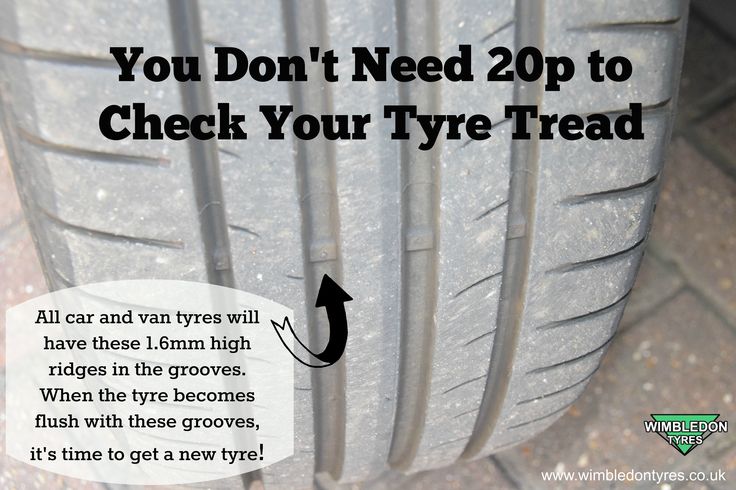 There is a great temptation to get by with small financial costs and purchase a set of used tires. Be careful!
There is a great temptation to get by with small financial costs and purchase a set of used tires. Be careful!
Sellers advertise used tires as good or excellent condition. Do not be too lazy to personally measure the height of the tread layer. And remember: for winter tires, a residual tread depth of 4 mm is already 100% wear.
When buying used tires with tires, it is important to remember that tires from different manufacturers and seasons initially have different tread heights (when they are new). And most importantly: the tires have, accordingly, different wear limits - the tread depth at which the tire begins to lose important characteristics. These differences are most noticeable in winter and summer tires. Keep these points in mind when measuring the remaining tread depth of used tires.
The quality of domestic roads, unfortunately, does not allow tires to be used for 7–10 years. If you still decide to buy a used kit, check the year of manufacture - it is better not to consider tires older than 8 years.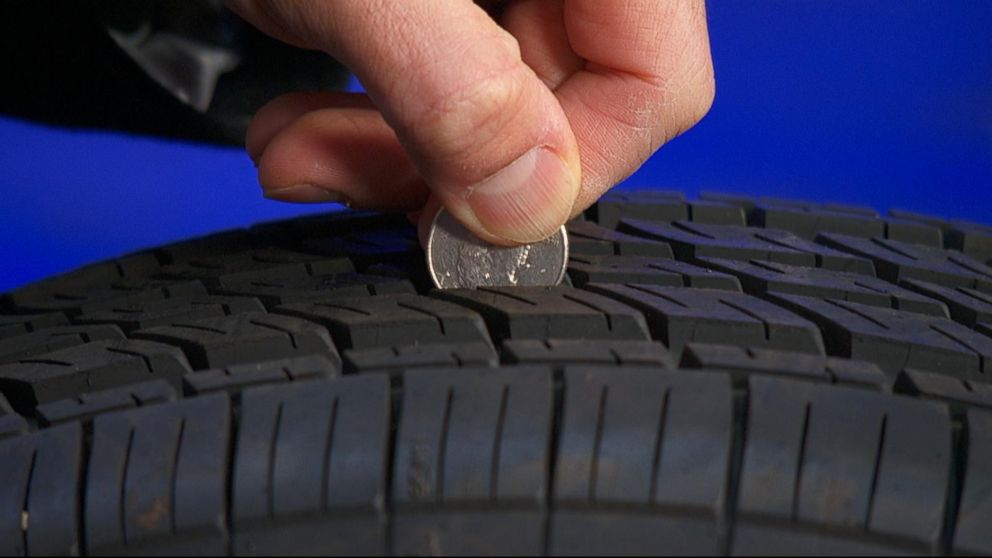
there is no guarantee for tires bought from hands;
the seller can cheat - for example, offer tires from different manufacturers in one set. Some especially enterprising salesmen even cut the tread on the worn rubber, as if the tires had not yet worn out;
you will have to spend a lot of time picking up tires from private sellers - much of what is put up for sale is only suitable for recycling;
Products may have hidden or visible defects. Visible are punctures, tears, cuts. A tire with a lot of damage can collapse in motion. Hidden defects include damage to the cord, which most often occurs after punctures or a strong blow. A car with such a malfunction may wiggle on the road, and it will be unstable;
the goods were stored in the wrong conditions, for example, under direct sunlight - this reduces the life of the tires and they will quickly become unusable, even if the residual tread depth is ideal;
it is not always possible to carry out a tire fitting in the presence of the seller, you will have to check the kit yourself after payment.
Without a specialist, there is a risk of buying tires that you cannot use. Don't skimp on safety. Purchasing a new set of tires will require more investment, but will pay off with a long period of trouble-free operation.
The maximum permissible residual tread depth for a passenger car is 1.6 mm in summer and 4 mm in winter.
SDA strictly regulate the residual height of the tread pattern. Violation of traffic rules is a reason for drawing up an administrative protocol.
For your own safety, replace worn tires on time. Better for new ones.
Often selling tires on rims is a way to hide the patches and the "medical history" of the tire.
Related content
Critical tire wear: when we risk crossing the line
As you know, rubber loses its properties over time.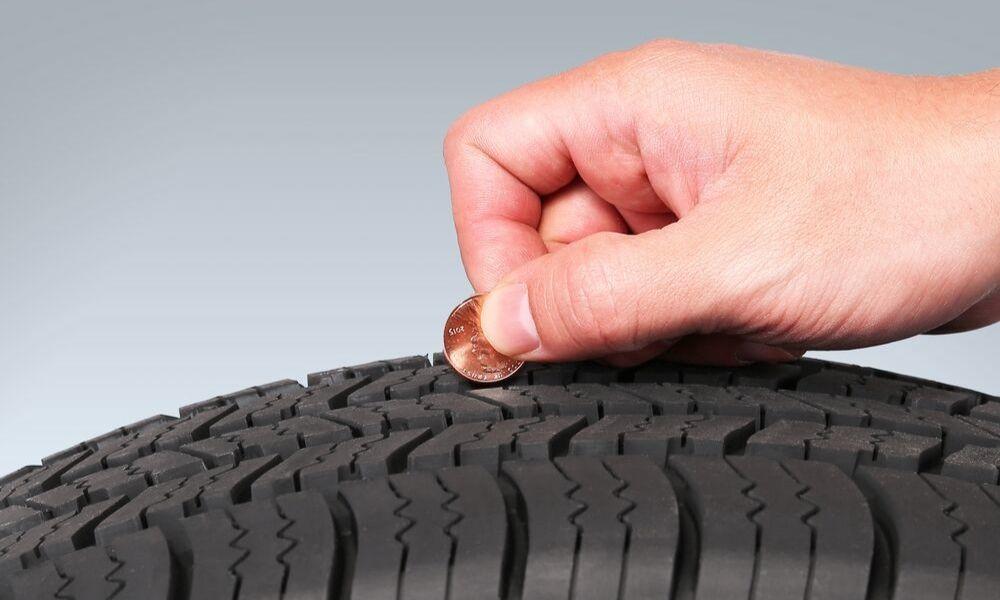 It becomes less elastic, microcracks appear on its surface. Rubber, in the words of the drivers, "dube". The sidewalls become rigid, tire fitting is difficult. At the same time, the grip properties of the tire deteriorate, especially its ability to keep the car on wet pavement.
It becomes less elastic, microcracks appear on its surface. Rubber, in the words of the drivers, "dube". The sidewalls become rigid, tire fitting is difficult. At the same time, the grip properties of the tire deteriorate, especially its ability to keep the car on wet pavement.
Tire age limit varies depending on the quality of the rubber compound and manufacturing technology. According to GOST, the warranty period for tires is five years, and the further possibility of using the tire is determined by the consumer. As a rule, tires run longer depending on the mileage and the driver's accuracy. But you should think about buying tires older than eight years, even if they look decent and, without running a single kilometer, lay in the warehouse.
The production date is applied to the sidewall as a set of four digits: the first two are the week of manufacture, the next two are the year of manufacture. It is easy to calculate that, for example, the numbers "5012" mean that you have a tire released in December 2012.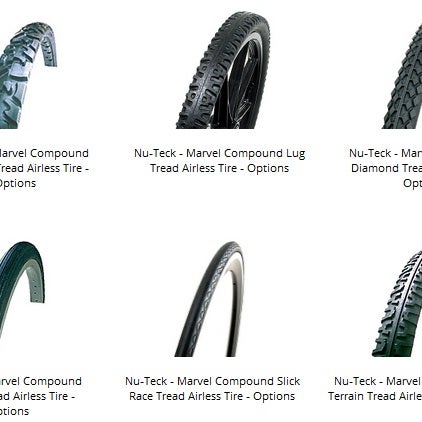
The production date is printed on the sidewall as a set of four digits: the first two are the week of manufacture, the next two are the year of manufacture. It is easy to calculate that, for example, the numbers "5012" mean that you have a tire released in December 2012.
When buying a set, it is also important to choose not only tires of the same brand and model for all wheels, but also preferably ones that are close in age. This is the only way to count on the fact that the purchased tires in terms of properties will not differ much from one another.
This is a special item when choosing a used tire. They can be divided into two groups - visible and hidden.
Visible include punctures, tears, cuts, hidden - damage to the cord. This kind of damage is clearly visible when examining the inside of the tire. You can allow the presence of "fungi" and patches from the side of the tread. But their number should not be excessive. The more patches, the more difficult it is to balance the wheels, and this affects the comfort and suspension parts while driving, and the residual life of the tire itself is reduced.
The more patches, the more difficult it is to balance the wheels, and this affects the comfort and suspension parts while driving, and the residual life of the tire itself is reduced.
Related materials
7 rubber signals: what the tire says about car problems
In addition, you need to remember that the patch blocks the exit of air from inside the wheel, but does not block the entry of moisture into the tire structure from the outside. Water, including salt containing water, getting on the metal cord, first causes rust, and then the destruction of metal threads. In comparison with a patch, a sealing puncture on both sides (“fungus”) looks preferable. But patches on the sidewall are generally unacceptable. A tire with a side cut is unusable. In the best case, on a tire with a "healed" sidewall, you can, with care, get to the house, and then change the wheel.
It has been noticed that other sellers, in order to hide the patches and "medical history" of the tire, offer them complete with a disk. The buyer will not disassemble the wheel to inspect it from the inside! Often, the pressure in the tire is noticeably lower than the working one. The fact is that under normal pressure, internal damage can give itself away. Hence the advice: if you are looking at used tires, it is better to buy them without rims or not on rims.
The buyer will not disassemble the wheel to inspect it from the inside! Often, the pressure in the tire is noticeably lower than the working one. The fact is that under normal pressure, internal damage can give itself away. Hence the advice: if you are looking at used tires, it is better to buy them without rims or not on rims.
A wheel inflated to working pressure must be even, have a clear geometric shape without hernias and swellings. You can check this only by mounting the wheel on the disk and pumping it up. Therefore, when buying a used tire, it is necessary to discuss with the seller the possibility of a return in case of hidden defects.
Related materials
7 main principles for choosing summer tires
In general, such defects are caused by damage to the cord after punctures or strong impacts. Outwardly, this manifests itself in the wave-like bends of the tread - the whole thing. This can either be noticed in the parking lot or felt when driving at a slow speed.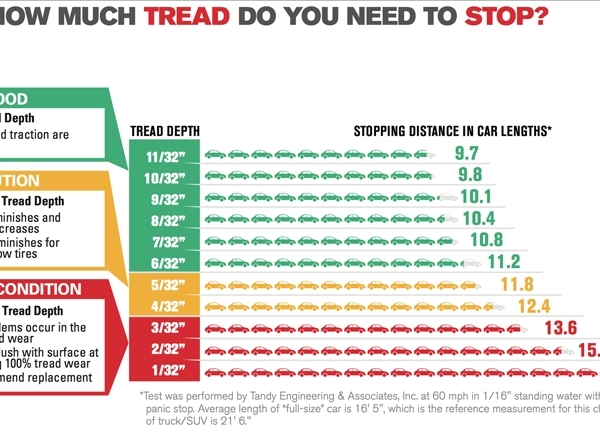 A car with damaged tires starts rocking from side to side. With an increase in speed, "waltz" disappears, but the car loses stability. This is dangerous.
A car with damaged tires starts rocking from side to side. With an increase in speed, "waltz" disappears, but the car loses stability. This is dangerous.
When the cord is peeled, hernias occur. Most often they are found in the shoulder area and are the result of a collision with a curbstone. How long a wheel with a hernia lasts, no one will undertake to predict.
This is the main criterion when choosing tires with mileage. The tread depth determines how long you can drive on these tires. Remember that according to the Rules of the Road, the tread depth of summer car tires should not be less than 1.6 mm, and winter tires - less than 4 mm. It is clear that these indicators are critical, which means that a margin of no less than 2–3 mm must be added to them.
You also need to pay attention to the uniformity of tread wear. It should be the same in depth both in the center and along the side tracks around the entire circumference. In order for the wear pattern to be correct, measurements of the tread depth are carried out crosswise in diametrically opposite directions.